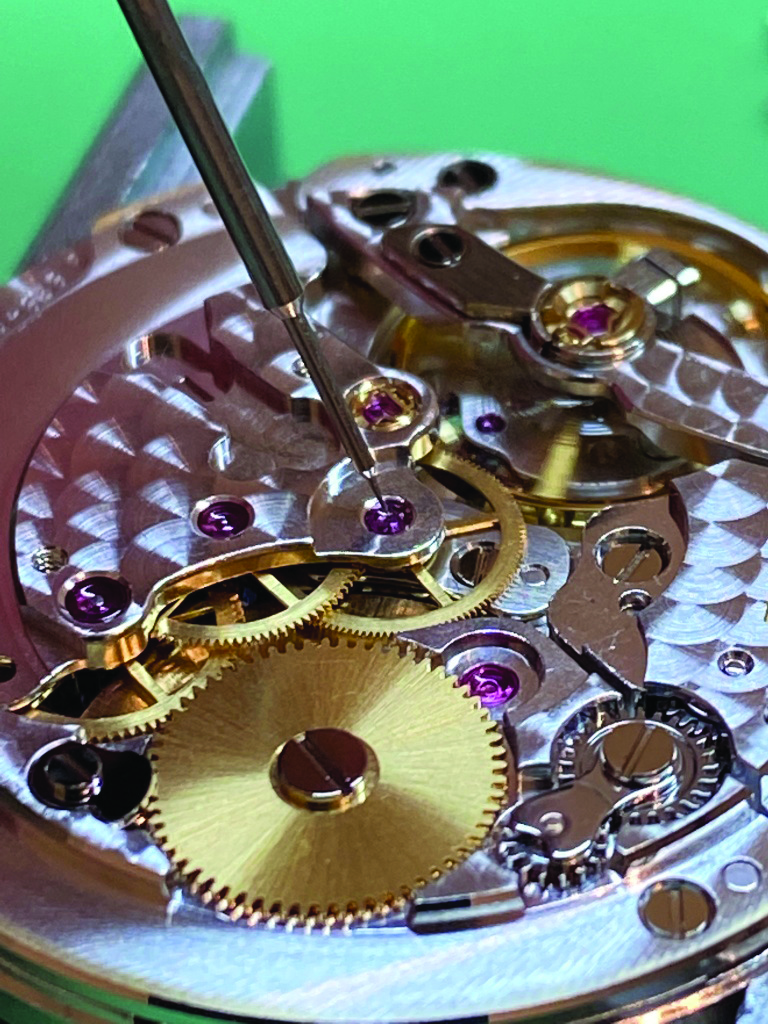In the first of a planned series of articles, I want to explain how I approach every watch I service. There are naturally many differences between each brand and every calibre, vintage or modern, but the overall approach and processes each watch goes through remains the same.
My follow up articles will look in detail at several different brands, some with complications, actually being serviced.
There really aren’t too many different ways a service can be done if it is being done correctly. All luxury watch services whether carried out by the brand or a competent independent watchmaker will follow some close variation of the stages below:
1. Disassembly and movement checks.
2. Cleaning.
3. Reassembly and lubrication.
4. Regulation.
5. Testing.
6. Quality control.
If the watch is to be serviced correctly none of the above steps can be missed and all must be carried out accurately. This is time consuming and the only way it can be done is manually by a watchmaker – there really are no short cuts.
Step 1. Disassembly and movement checks
The first stage of every watch service is disassembly of the movement, Figure 1. The movement has to be completely stripped down to each component part, this ensures the watch cleaning machine can do its job correctly, making sure that each part is completely clean prior to reassembly. Every part must also be checked for any signs of damage or wear as it is removed. This is done under magnification and if any parts are found to be defective for any reason they must be replaced. If something is missed at this stage of the service it will come back to bite the watchmaker later on when the movement fails to perform as it should. Numerous other checks are carried out at this stage such as end shakes, side shakes, flatness and concentricity of the hairspring, all issues and faults are rectified at this point.
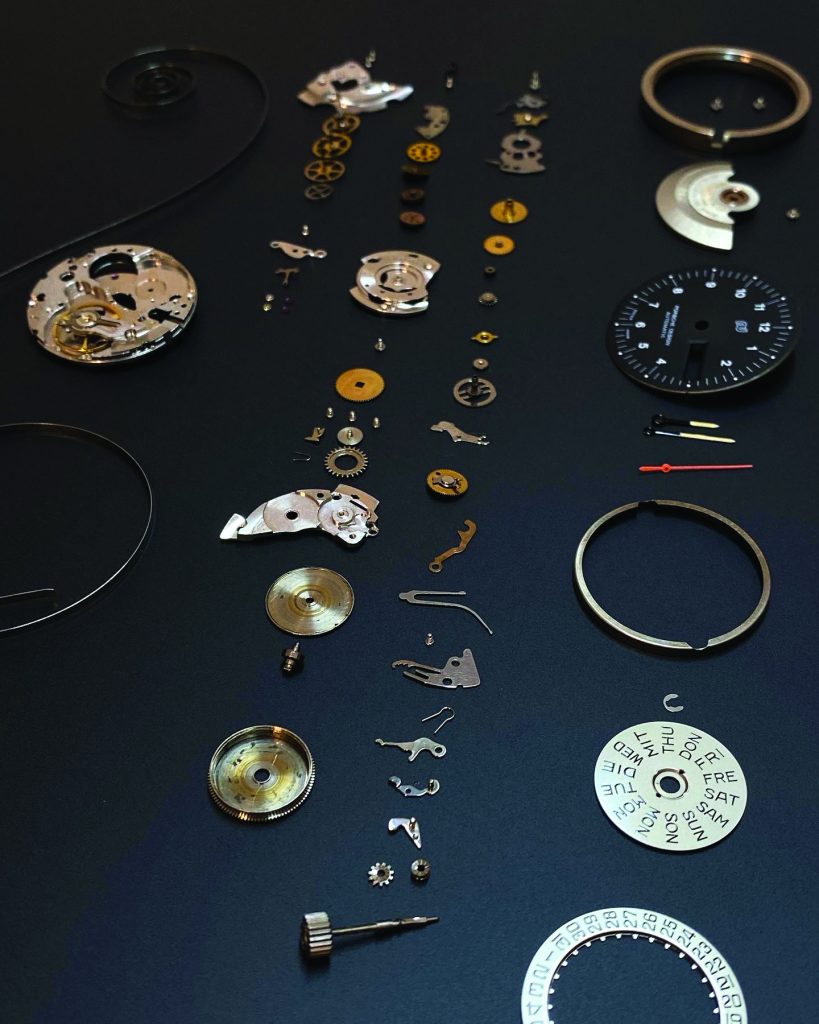
Step 2. Cleaning.
Once I am certain the movement has had the necessary parts replaced and all adjustments have been made, the next stage is cleaning. The movement needs to be completely clean before reassembly so that nothing can interfere with its running. A watch is a finely balanced machine and it doesn’t take much to stop it. All old oil, dirt and debris must be completely
removed before it can be reassembled and lubricated.
The cleaning machine, Figure 5, is made up of various jars containing different chemicals designed to remove all foreign particles from the movement whilst not damaging the watch movement itself.
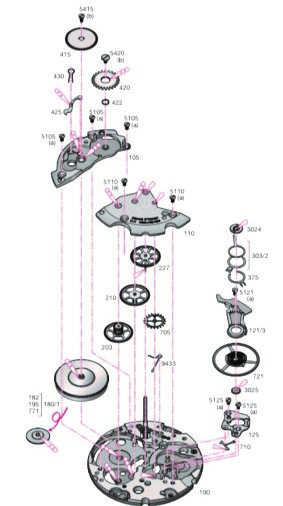
Step 4. Regulation.
Once the movement is back up and running it needs to be regulated. A timegrapher is used to carry out this step of the service. Listening to the sounds that a watch escapement produces (the part of the movement responsible for time keeping), the timegrapher is able to provide a visual display of various parameters of the watch performance, one being the rate in seconds that the watch is either gaining or losing per day. It can then be adjusted to within the tolerances of the movement in question, there are a few other parameters checked here along with the rate of the watch.
Figure 8 shows a recently serviced Rolex being tested on the timegrapher. The watch is checked in various positions to ensure it is running to tolerances in all.

Step 6. Quality control.
Once all the above steps have been completed and the watch has successfully passed its testing phase, it will then move onto quality control. Quality control is the final stage before the watch is ready for dispatch and involves checking, one final time, the functions and various aspects of the watch to ensure nothing has been missed and everything is performing as expected before its return.
All watches need servicing at some point, if left, inevitably something will go wrong. Most brands recommend a full service is carried out every five years or so, which is what I would recommend to ensure a watch is running correctly and performing as it should. However if all otherwise seems well and you miss this by a year or two, it most likely won’t be the end of the world, but be aware that by this point oils will be drying out and the chance for damage to occur increases quite significantly, which can result in increased servicing costs due to the cost of new parts. In the end it comes down to the decision of each individual owner and what they are most comfortable with.
All watches serviced by The Watch Professional go through the above six steps and, whilst every watch calibre is different and the actual physical task of servicing a watch varies, the process is always the same. There are no short cuts, no quick fixes and no magic answers. Watch servicing, done correctly following these steps, is time consuming and a very skilled process that requires a meticulous attention to detail and takes years of experience to become proficient. Even after 15 years and considerable experience I am still learning and most likely always will be, but I love my job and there isn’t anything else I’d rather be doing!
In the next article I will detail a watch going through the exact process I have detailed here. Thank you for reading.
thewatchprofessional.co.uk
@thewatchprofessional
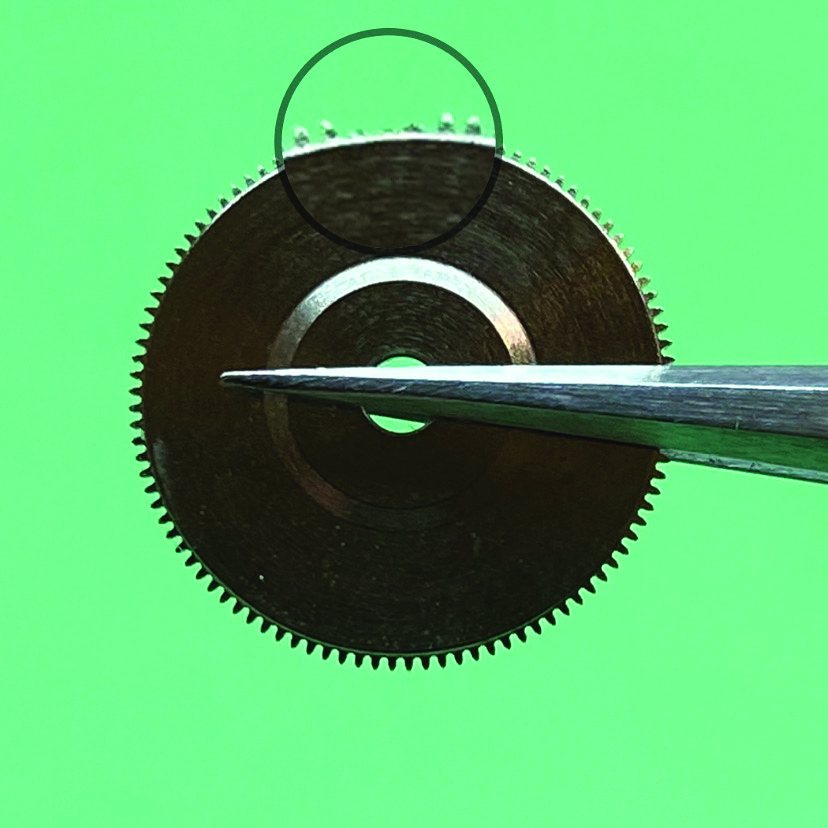
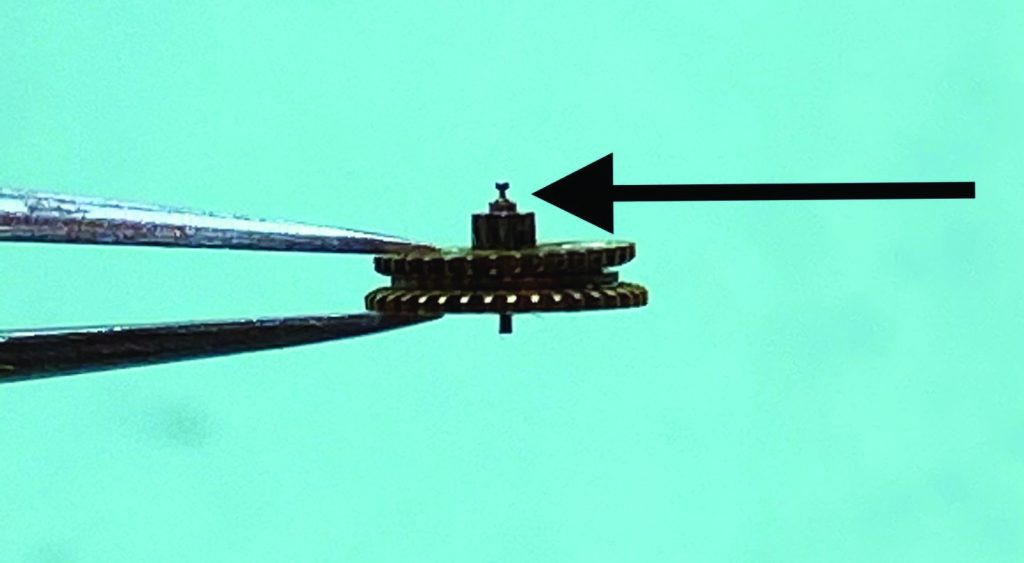
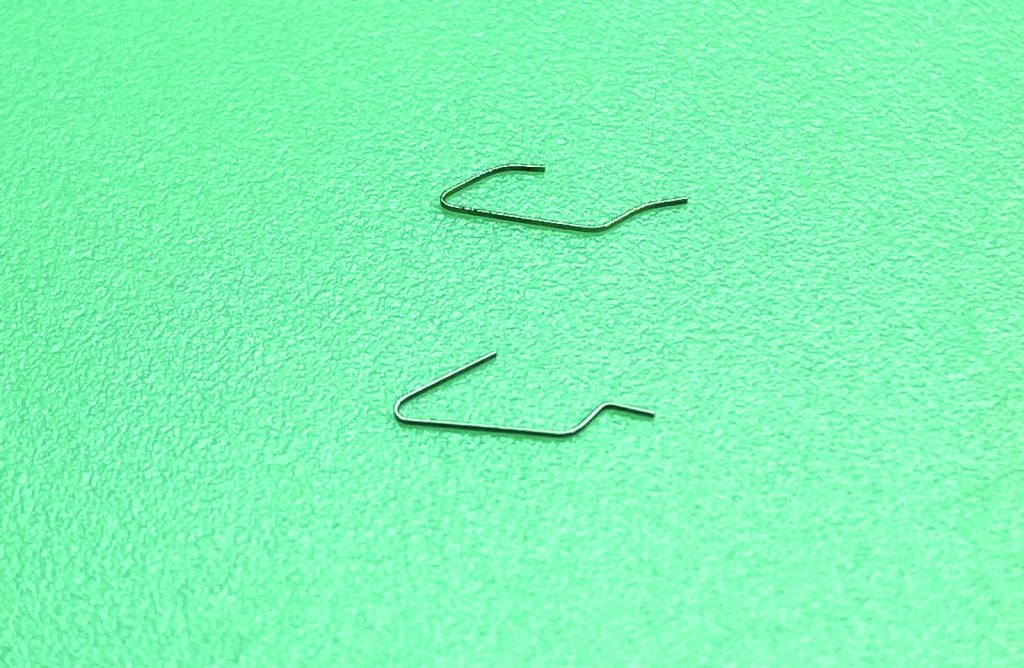
The above images, Figures 2, 3 and 4, show three examples of parts found during servicing that must be replaced.
The first picture is a barrel, this houses the mainspring that provides power to the movement, teeth within the highlighted circle are damaged, if not replaced the watch will stop.
Second is a very worn pivot on a reversing wheel (part of the automatic device), if not replaced it will soon snap and cause issues once it arrives back with the customer.
Finally an out of shape click spring (top) together with the new in-shape one (bottom). Often these can be bent back to shape but this one is quite severe. If left it will cause winding issues as this is the part of the movement that prevents the watch from unwinding itself.

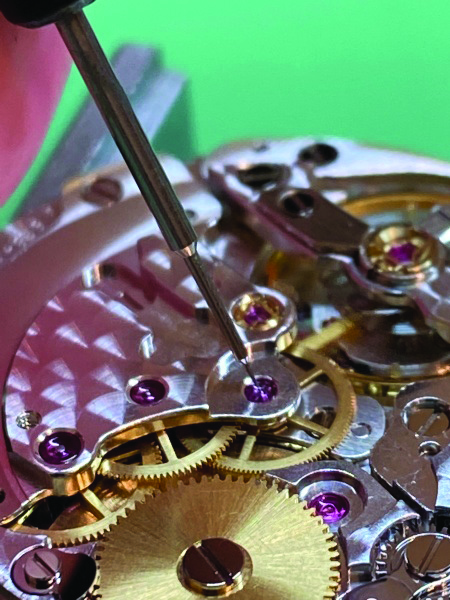
Step 5. Testing.
Once the service is complete and after water resistance tests have been carried out, the watch moves on to a period of testing. I usually test the watch over a period of five days, although this can vary from watch to watch and is always longer should any issues arise during the testing period. The main aim of testing is to ensure the watch and all its functions are performing as they should, and includes the following:
1. Power reserve checks – the amount of time the watch will run from full power to stopping.
2. Real time, time keeping checks – time keeping is checked on the timegrapher but also in real time.
3. Automatic winding – an automatic winding wheel is used to check the watch winds up as it should.
4. 24 hr time keeping test – time keeping is checked after 24 hours to ensure it is still within tolerances with a depleted power reserve.
5. Date change – if the watch is fitted with a date, the watch is monitored to ensure it advances.
6. Chronograph tests – if applicable, all functions of the chronograph will be tested.
Not an exhaustive list but every watch needs to pass all of the above before it can be deemed ready to be returned to the
customer.
Figure 9 shows a Rolex GMT Master II having its automatic device tested on the winding wheel.


